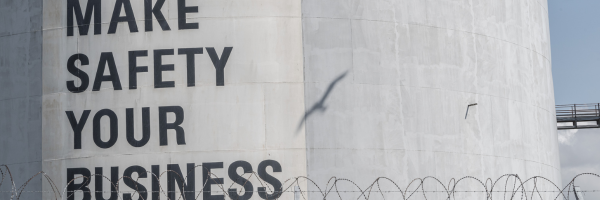Establishing the Right Health and Safety Culture

Establishing the right health and safety culture in any organisation is as critical to business success as a solid marketing plan or recruitment strategy. Unfortunately, this is often overlooked, especially by small businesses.
So what are some of the key components that can help develop the right culture, regardless of size, style, or location?
Set Clear Expectations
Everyone in the business, from the management team to casual employees, needs to understand what the expectations are for good health and safety. These expectations must be realistic, appropriate to the business, and achievable.
Engage Your People
Health and safety engagement needs to be clear, precise, and regular. Keep the messaging interesting and relevant, not dry and forgettable. Invite workers to share ideas for improvement. They’re the eyes and ears of your business, and the best ideas often come from the frontline.
Recognise Effort
Reward and recognise workers for initiatives and improvements. Make it fun, make it visible and make it consistent.
Understand Risk vs Hazard
Know the difference: the risk of being run over in a warehouse is not the same as the hazard of operating near a forklift. Managing risk and controlling hazards both matter, and they are not interchangeable.
Make Systems Accessible
Have good systems for reporting and reviewing risks, hazards, and incidents. These systems should be easy to access and use.
Train, Record, Review
Ensure all staff are well trained for their roles, with that training recorded, signed off, and reviewed at least annually.
Prepare for Emergencies
Provide first aid systems, train first aiders and emergency wardens, and make sure AEDs (defibrillators) are available.
Induct Everyone
Everyone should complete a formal health and safety induction to fully understand the importance of safety in your business.
Centralise and Review Your Info
Too many businesses fail to record or review health and safety data. Use a central system to house your policies, procedures, reports, and key documents, and set review intervals.
Example:
– Health and Safety Policies and SOPs should be approved by management and acknowledged by individual workers.
– These should be reviewed at least every two years, or after any serious incident.
– Meeting minutes and resulting actions should be recorded and followed up.
– Breaches and failures must be recorded and addressed promptly.
Drop the “Zero Harm” Rhetoric
One of the best things a business can do is drop the unrealistic goal of “Zero Harm.” Accidents happen. Even at the highest levels of government, we’ve seen serious incidents that impact mental health. Setting unattainable goals sets your people up to fail.
Adopt a No-Blame Culture
A no-blame approach encourages learning and openness. No one comes to work intending to cause harm. However, there should be provisions for “just cause” in those rare situations where someone knowingly ignores safety protocols.
What the Act Requires
The Health and Safety at Work Act 2015 (HSWA) and its regulations require all Persons Conducting a Business or Undertaking (PCBUs) to actively manage health and safety.
– Directors, owners, and managers have non-transferable duties. Recent court cases reinforce that those in charge must be familiar with and take action on health and safety matters.
– Workers must understand their duties, only perform work they are trained and competent to do, and be empowered to say no to unsafe tasks.
The 3 C’s
When multiple businesses work together, health and safety responsibilities become shared. Communication, Coordination, and Cooperation are essential. This can cause friction if one party is less committed to safety, but the law supports strong systems:
– Contractors must pre-qualify subcontractors before allowing them on site.
– Subcontractors with better systems can stop work or escalate to WorkSafe NZ if contractors fall short.
The overarching goal of all those in the workplace must be to ensure that everyone at work, goes home safely and healthy at the end of the job.
Brad Maxwell
Health and Safety Advisor, Associate RICS

Brad Maxwell is an independent health and safety advisor with 15 year experience. He has worked across a variety of industries including Maritime, Construction, Sports and Recreation, Hospitality and Property.
Having spent almost 10 years at sea, 25 plus years in real estate and property, he has a wealth of knowledge in operational requirements and senior management roles having been the CEO for a variety of companies in Christchurch, prior to moving to Auckland in December 2016.
Brad is an Associate of the Royal Institute of Chartered Surveyors, and Real Estate Institute, an Affiliate of the Institute of Safety Management, a Member of Site Safe.
For more information on how Engage can help your business, contact us today.
